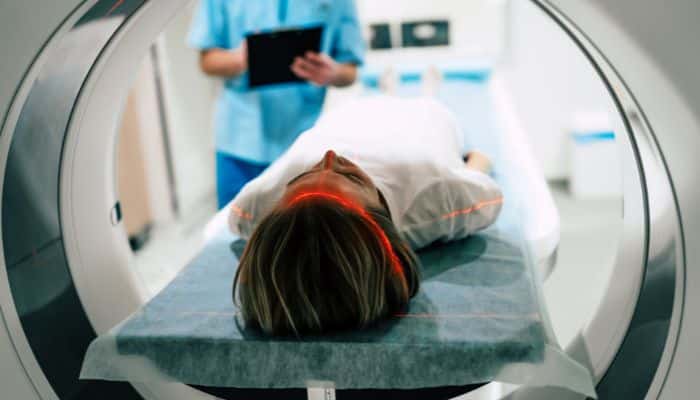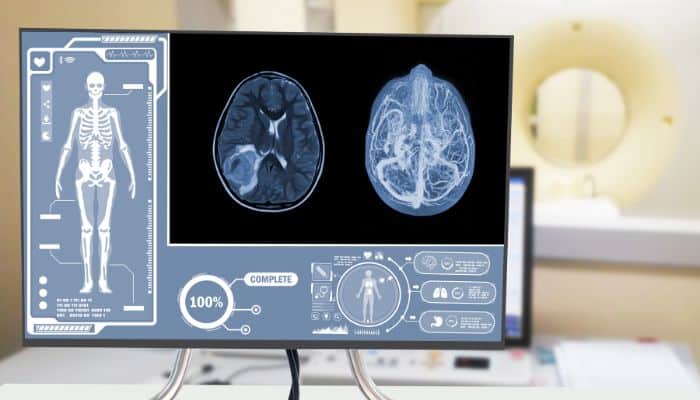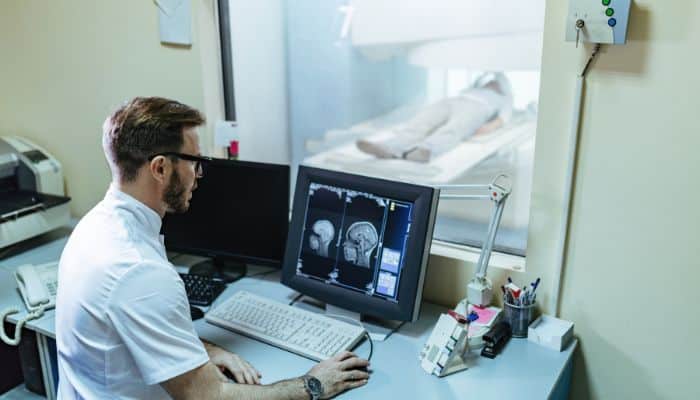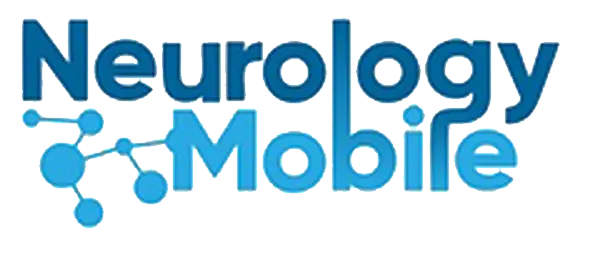4 min read
Transcranial Doppler (TCD): A Comprehensive Guide
Transcranial Doppler, commonly referred to by its initials TCD, is a non-invasive ultrasound technique used to measure blood flow velocity in the brain’s major arteries. Through a small transducer or probe, ultrasonic waves are emitted and penetrate the skull, reflecting off red blood cells moving through cerebral arteries. These reflected waves are captured by the same transducer and converted into electrical signals that are then interpreted by specialized equipment.
TCD is especially useful because it allows healthcare professionals to evaluate the brain’s hemodynamic status in real-time. That is, it offers a direct view of how blood flows through its arteries, which can be critical for detecting a variety of conditions and for monitoring the brain’s response to different treatments.

Brief History of TCD
The development of Transcranial Doppler dates back to the 1980s. Although Doppler ultrasound techniques had been used since the 1960s to examine the body’s blood vessels, it wasn’t until the 80s that researchers began applying this technology to observe cerebral arteries.
One of the main challenges in the early days of TCD was the density of the human skull, which makes transmitting ultrasonic waves difficult. However, it was discovered that certain «acoustic windows,» such as the temporal window, allow ultrasonic waves to penetrate the skull and reach cerebral arteries.
Over the years, TCD has experienced a series of technological advances that have improved its accuracy and ease of use. Today, it is a standard tool in many hospitals and research centers worldwide and remains a valuable technique in the field of neurology and neurosurgery.
Basics of Doppler Ultrasound
Doppler Ultrasound is a diagnostic technique that uses sound waves to produce images and assess the movement of objects, typically blood flow within vessels. It’s based on the Doppler effect, which describes the change in frequency of a wave in relation to an observer. In medical terms, this observer would be the moving blood cells.
When the ultrasound waves are directed at a moving object, like red blood cells, they bounce back at a different frequency. This shift in frequency can be measured and translated into data about the speed and direction of blood flow. The information is then graphically displayed, often as a waveform that shows the velocity of blood flow over time. This allows healthcare providers to identify areas of normal and abnormal blood flow, making it invaluable in the diagnosis and treatment of vascular conditions in the brain and elsewhere.
How TCD Works
Transcranial Doppler (TCD) specifically applies the principles of Doppler ultrasound to measure blood flow velocity in the cerebral arteries. The process typically involves placing a small probe, or transducer, against the patient’s scalp at specific «acoustic windows» where the bone is thinnest, such as the temporal region. This probe emits and receives ultrasonic waves.
As these waves pass through the skull, they encounter moving blood cells within the cerebral arteries. Reflecting off these cells, the waves return to the transducer with a shifted frequency. This frequency shift is proportional to the velocity of the blood flow.
A computer attached to the TCD machine then interprets these frequency shifts, converting them into real-time visual and auditory data. This provides an immediate view of the cerebral blood flow velocity, which is crucial for detecting conditions like vasospasm, stenosis, or occlusions in the cerebral arteries.
Differences between TCD and other neuroimaging techniques
Transcranial Doppler (TCD) is unique in its approach and application within the realm of neuroimaging. While it offers invaluable insights into cerebral blood flow, it’s essential to understand how it differs from other neuroimaging techniques.
- Modality: Unlike MRI (Magnetic Resonance Imaging) and CT (Computed Tomography) scans, which produce detailed anatomical images of the brain, TCD focuses primarily on blood flow velocity in the cerebral arteries. It doesn’t provide a detailed anatomical view but offers real-time hemodynamic information.
- Invasiveness: TCD is a non-invasive procedure, meaning that it doesn’t require any incisions or introduction of instruments inside the body. Techniques like cerebral angiography, however, involve inserting a catheter into the blood vessels.
- Radiation Exposure: Unlike CT scans, which use X-rays and expose the patient to radiation, TCD uses sound waves and therefore has no radiation exposure.
- Cost and Accessibility: TCD equipment tends to be more portable and less expensive than MRI or CT machines. This makes it more accessible, especially in settings where resources are limited or immediate bedside assessment is required.
- Temporal Resolution: One of TCD’s primary strengths is its ability to provide real-time information about blood flow. While MRI and CT scans offer snapshots at a particular moment in time, TCD allows for continuous monitoring, which is crucial in dynamic situations, such as surgeries or acute stroke interventions.
- Limitations: Due to its dependency on acoustic windows and the variability of these windows among patients, TCD might not be applicable to every individual. In contrast, techniques like MRI and CT don’t rely on such windows and can provide detailed images for most patients.
By understanding these differences, medical professionals can make informed decisions about which technique is best suited for a particular patient or clinical scenario.

Clinical Applications
- Stroke detection and evaluation: Transcranial Doppler (TCD) plays a crucial role in the early detection and ongoing evaluation of strokes. The real-time assessment of blood flow in cerebral arteries allows healthcare professionals to quickly identify reduced or blocked blood flow, which might indicate an ischemic stroke. Conversely, increased blood flow might suggest a hemorrhagic stroke. TCD can also help in determining the location and severity of the blockage, guiding treatment decisions, such as thrombolysis or mechanical thrombectomy.
- Monitoring cerebral vasospasm after subarachnoid hemorrhage: Patients who have suffered a subarachnoid hemorrhage (SAH) are at risk for cerebral vasospasm, a condition where the brain’s arteries constrict, limiting blood flow. TCD is invaluable in this scenario as it offers continuous monitoring of the blood flow velocities, enabling timely detection and intervention of vasospasms.
- Assessing intracranial pressure and brain death: Elevated intracranial pressure (ICP) can be life-threatening and needs immediate attention. While there are direct methods to measure ICP, TCD provides a non-invasive alternative by assessing changes in blood flow patterns. Furthermore, TCD can be used in the evaluation of brain death. A lack of detectable blood flow in major cerebral arteries might confirm brain death in conjunction with other clinical assessments.
- Monitoring during carotid endarterectomy: Carotid endarterectomy is a surgical procedure performed to remove plaque from the carotid artery and reduce the risk of stroke. During this surgery, TCD can be employed to monitor cerebral blood flow, ensuring that adequate blood is reaching the brain and quickly detecting any complications.
- Evaluating sickle cell disease in children: Children with sickle cell disease are at an elevated risk for strokes. TCD has emerged as a valuable tool for risk stratification in these patients. By measuring blood flow velocities in the cerebral arteries, healthcare professionals can identify children at higher risk and implement preventive measures, such as blood transfusions.
Advantages of TCD
- Non-Invasiveness: Transcranial Doppler (TCD) is a completely non-invasive technique, which means that it doesn’t require any surgical procedures or the introduction of instruments inside the body.
- Real-Time Monitoring: One of the significant benefits of TCD is its ability to provide real-time data on cerebral blood flow, making it valuable for dynamic situations like surgeries or monitoring patients after certain medical events.
- Cost-Effectiveness: Compared to other neuroimaging modalities, TCD is relatively inexpensive, making it a more accessible option, especially in settings with limited resources.
- Safety: TCD doesn’t involve any radiation exposure, making it safe for repeated use, which is especially beneficial for continuous monitoring scenarios or follow-up assessments.
- Portability: TCD equipment is often more compact and portable than other imaging machines, allowing for bedside assessments and use in various settings, including clinics, operating rooms, or emergency departments.

